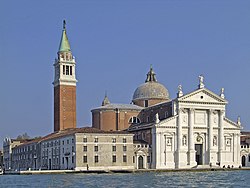Life

According to several sources, Ponzone was born in Venice, identified as «Mathi et Simon fiol de noble Patron Claudio Bolzon et Agnesina Negro equal in Madonna» born in the parish of Saint Moses November 9, 1583. [1] Some other sources reported his date of birth approximately in 1586 in Rab, in the far north of Dalmatia, that time owned by Republic of Venice.
Matteo Ponzone operated mainly in Venice, unless an interim period of ten years spent in Dalmatia, leaving their works in various locations of the coast. [2]
Ponzone was young student of Jacopo Palma the Younger, and was related to the painter Sante Peranda, who was probably one of his teachers and whose influence is evident in the work of Ponzone. He joined the Fraglia dei Pittori of Venice from 1613 to 1633, being one of the busiest in town throughout this period. In his workshop he had as pupils Antonio Zanchi, Andrea Celesti, Pietro Negri, and Giovanni Carboncino, who assist him in various paintings orders of the last Venetian period.
The large amount of work left in situ adequately define the importance for the history of Venetian painting of the first '600, although the significance was detected only in recent years. [3] Similarly, the caliber of orders received -those of particular importance include works in the churches of San Giorgio Maggiore, Madonna dell'Orto, and San Cassiano - account for the great success and wide contribution of Ponzone to Venetian artistic history.
